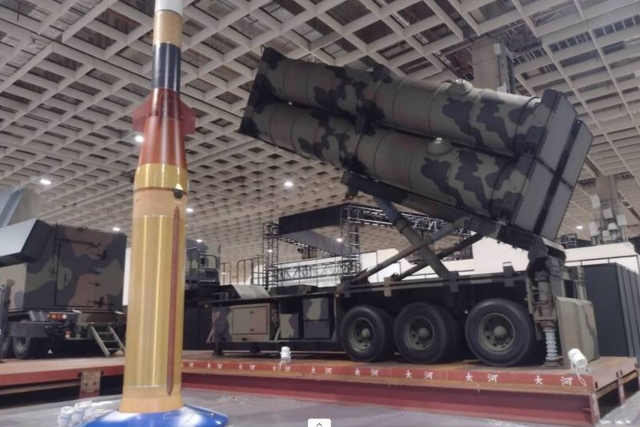Apptricity To Extend Capabilities Farther Into Mobile And Tablet Technology

Apptricity Founder and CEO Tim Garcia
In an interview with Defenseworld.net, Apptricity Founder and CEO Tim Garcia talks about the company's mobile enterprise applications and the commercial off-the-shelf software (COTS) solutions that deliver both leading-edge enterprise application technology as well as best practices configuration, which complement, extend or replace legacy systems.
DW : Could you give us an overview of Apptricity and the kind of solutions you provide?
Tim Garcia: Historically, there’s a frustration at many companies when it comes to enterprise software applications. Too often, these applications come at too high of a cost to configure, develop, integrate and deploy and are never as successful as was hoped. Apptricity was founded to help resolve these issues and help companies make the most of their investments in both applications and platform infrastructure. Apptricity’s commercial off-the-shelf software (COTS) solutions deliver both leading-edge enterprise application technology as well as best practices configuration, which complement, extend or replace legacy systems. Apptricity’s mobile enterprise applications help businesses and government organizations from across the globe address mission-critical supply chain management and integrated finance demands. Our applications accelerate business processes and command visibility and mobilize enterprises with real-time business intelligence and real-time transaction throughout so management has visibility into every action and transaction within the enterprise and among its partners, customers and suppliers.
DW : In particular, could you elaborate on your defense solutions?
Tim Garcia: Our defense solutions are supply-chain driven. Boiled down, we provide real time visibility into where people, material and assets are located at any given time and point globally in theaters of war. We help track everything — supplies, cargo, and even people. Whether someone needs ammunition, MREs, or water, a requisition request is made. That requisition gets sent into the system, and then individuals or materials are transported via helicopter, truck, etc. to the requested location that it is needed. Apptricity provides multi-modal support. We track where those supplies are all along the path, from factory to foxhole.
DW : Lockheed Martin recently chose Apptricity to provide asset management as well as work order management software solutions to the C130J Super Hercules. Can you tell us more about this contract?
Tim Garcia: We are tracking assets related to that project for the Arkansas National Guard.
DW : Besides Lockheed, who are your other defense customers (both in the US and abroad)? Can you elaborate on the contracts you’ve secured with them?
Tim Garcia: We do work with several different defense customers. I can tell you that we are working with Honeywell, tracking aviation assets for the Afghanistan National Guard. We have worked with Comtech to help with asset tracking and transportation planning for the NATO Movement Tracking System. We worked with CSC as a subcontractor for TC-AIMS II Theater Operations. When the Army Corp Of Engineers took over the contract for TC-AIMS II, we became the prime contractor for TC-AIMS II Theater Operations and Air Operations. And we are a joint demonstration partner with Boeing for aviation cargo/personnel tracking on the CH-47.
DW : Can you explain how the Jetstream and SOA framework work?
Tim Garcia: Jetstream is Apptricity’s cloud platform that allows us to provide enterprises with solutions that are highly scalable, always available and globally accessible. Apptricity Jetstream™ is an all-encompassing mobile platform that empowers all our products with the four tenets: Highly Adaptable, Highly Configurable, Superior Integration, and Minimal Cost Migration — accessible virtually everywhere. We do that by using our Service-Oriented Architecture (SOA) Framework. Our applications are platform agnostic. That means they will work no matter the operating system, data source, application server, web server or mobile platform. Our applications allow for mass configuration. Apptricity solutions come on an SOA platform which includes a configuration, workflow and business rules engine that registers, classifies and manages all of a customer’s configuration changes. Subject matter experts can configure or modify fields and rules using embedded tools and best practices, significantly reducing the need for expensive programmers or outside consultants. This allows applications to be dynamically adaptable compared to alternative legacy enterprise software solutions. Our integration engine allows customers to interface into legacy or third-party data sources. Apptricity has built connectors into Oracle, SAP, Peoplesoft, Lawson, Epicor, Workday, Great Plains, and other ERP applications. We have also built connectors for EDI, SML, CSV and other batch uploads. Our engine allows customers to receive data and/or collaborate with ERP other data sources by batch or real-time basis. Our proprietary migration facility allows customers to migrate their configuration settings seamlessly to the next version of Apptricity applications without having to rewrite workflow, business rules or re-configure everything over again when a new version of software is available. This reduces lifecycle costs compared to other software solutions and gives customers higher returns on their investment.
DW : Your solutions are marketed to be cost-effective compared with other ERP solutions. How does this work?
Tim Garcia: It really goes back to our service-oriented architecture. With our configuration engine, users can modify the user experience, work flow and business roles to match exactly what they need. That means our software can run at optimum efficiency, allowing customers to get the most value out of their investment. We call this an “Exact Fit Solution.” We believe the business should run the software, not the software run the business. Also, our integration engine allows users to connect our applications to any third-party data source. Building those capabilities on the platform layer allows our applications to do things a lot faster since there’s no need for new coding. The ease of configuration and integration means everything that needs to be done to make the applications operate in just the way the customer needs them to can actually be done in-house. There’s no need to hire outside help or bring on new staff.
DW : Does Apptricity have any new solutions in the works?
Tim Garcia: We are extending our capabilities farther into mobile and tablet technology by growing our SmartFleet line of products to include Smartfleet Connect and Smartfleet Attendance. Apptricity Fleet Management is a comprehensive, end-to-end mobile management system that makes it easy to track, monitor and manage every aspect of your transport fleet assets, including inventory on each vehicle. Smartfleet Connect is a mobile inventory control system. It’s a vehicle-mounted integrated command and communication system that utilizes RFID technology to make mobile inventory and asset tracking possible both across the fleet and around the world. Smartfleet Attendance takes Apprticity’s mobile asset solution and applies it to school transportation, doing two vital things. It helps schools in tracking truancy and attendance using RFID technology. It also acts as a mobile hotspot to allow students data access while in transit.










